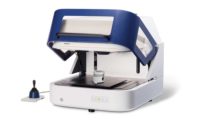On-The-Go Tools for the Modern-Day Materials Analysis Expert
Explore new depths of analysis through a combined use of XRF, mobile applications, and online software built specifically for materials analysis.

In today’s fast-paced, high-technology world, it is no surprise to learn that apps and online software play an important role in boosting productivity; however, you might be surprised to learn that there are mobile apps and online software tools that can assist with materials analysis. Quite often these supplemental tools are affordable, or in some cases free, for download on popular mobile devices and PCs. Apps and online software tools are particularly handy for those looking for a quick reference to supplement XRF analysis.
Reaching New Heights with Portable XRF Analysis
Portable XRF analyzers have proliferated on the market, as a complement to, expansion of, or replacement for applications which were once only possible in the laboratory. Among the benefits of bringing materials testing into the field are improved process efficiencies, cost savings, rapid analysis, and greater analytical throughput. Portable XRF instruments are recognized as exceptional tools amongst quality control professionals, but they contain only enough information to perform a specific task, such as identifying or quantifying an alloy or mineral. All portable instruments—regardless of technique—have limitations with regards to the elements that can be analyzed and the lowest concentration that these elements can be observed. One of the distinct challenges with bringing XRF analysis into the field is that a wealth of supporting information has remained on desktops and bookshelves, and in the minds of laboratory personnel.
Every day, engineers are faced with critical decisions when incorporating materials into their processes along with the need to minimize risks. Considerations such as corrosion, operation of machinery under extreme conditions, compromises between longevity and cost, and reliability of electronics all influence decisions on what materials to use. Therefore for engineers it is vital to select the most appropriate materials into the manufacturing process so as to ensure that each component or sub-assembly meets specific certification and standards. With the introduction of mobile apps and online software tools it is now possible to carry critical supplemental elemental information in your pocket.
In the modern workplace, people outside of an office environment, such as quality control inspectors, are dependent on internet connectivity via mobile phones and tablets, and it has become critical that they have access to all the resources they need in order to make the best informed decisions possible. Searching for this information, however, can be a daunting task. Looking up the full specification for a metal alloy, for example, can lead you to websites from metal producers, to brokers, to fabricators and even to myriad sites that are not related to material properties. It takes time to sort through multiple sources of information, it is sometimes difficult to know what information is trustworthy, and not everyone has the expertise to decipher good from bad information, especially when confronted with the pressure of making sound decisions at time-critical moments. For personnel in the field, the need for a quick decision can rapidly magnify this need to gain fast and validated results, which is where advances in dedicated online directories and mobile device apps can greatly improve the speed, ease and dependability of getting to the required answers.
Portable Elemental Solutions for the Mobile Expert
Online metal alloy databases catalog hundreds of thousands of verified grades under various categories including numerous naming schemes, country affiliations and trade organizations (e.g. AISI, ASME, AA, DIN, ISO and GB). These kinds of databases require a license which can be purchased directly from the instrument manufacturer or from the database company. Since the databases are cloud based, they can be accessed using a mobile device and can provide valuable support. Some, under license from instrument manufacturers, even include the ability to select the alloys most commonly used at a particular work site, and download them to work with specific XRF analyzers. With XRF analyzers themselves now coming from the manufacturer pre-loaded with hundreds of grades as a “one size fits all” solution, an undisputed triumph for the modern day materials analysis expert, this functionality can potentially lead to “library bloat,” where manufacturers have loaded so many grades onto a device, that is occasionally becomes difficult to sort through all the potential matches without assistance from an additional grade database.
Mobile device apps from the instrument manufacturers offer another way to get similarly useful information, sometimes without even needing an internet connection. These apps have a number of benefits including cost (typically free), instrument-specific advice, and information about related technologies that can help solve application needs. For example, if you do not know what kind of instrumentation or technology is appropriate for analyzing a given material (mineral, petroleum product, metals, circuit boards, carbon etc.), an app may ask a series of questions and return suggested technologies including XRF, Optical Emissions Spectroscopy (OES) or Laser-Breakdown Induced Spectroscopy (LIBS) that might be most appropriate for an application. Another popular feature is an interactive periodic table with XRF characteristics, useful for exploring spectra in the field or in the lab. For metal alloy analysis, apps also contain a focused version of the online databases containing key alloy data, while omitting some of the less commonly encountered alloys. Newer functions include the ability to compare several grades and their compositions, and the ability to identify elements not possible with some XRF instruments.
Mobile Providers
A mobile device app, a license for an online software database, or a combination of the two is a great way to add value to portable XRF analyzers. These apps can typically be found on Apple’s App Store (iOS devices) and/or Google Play (Android devices).
Looking for a reprint of this article?
From high-res PDFs to custom plaques, order your copy today!




